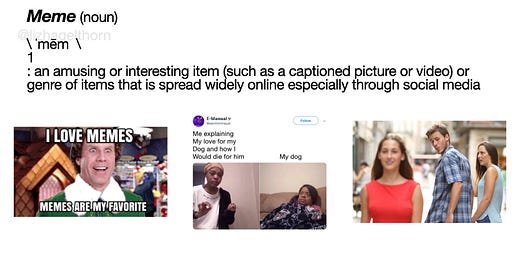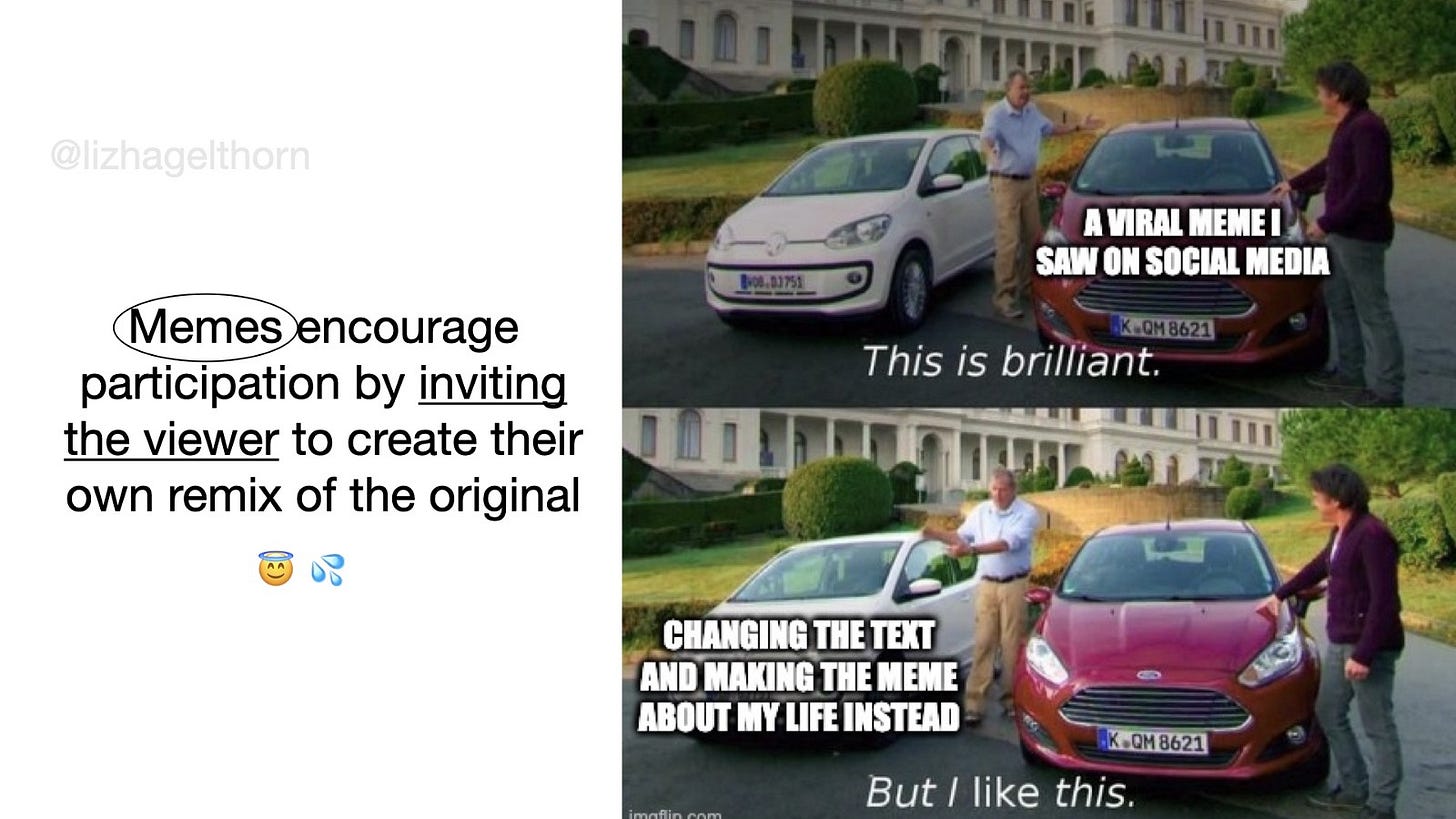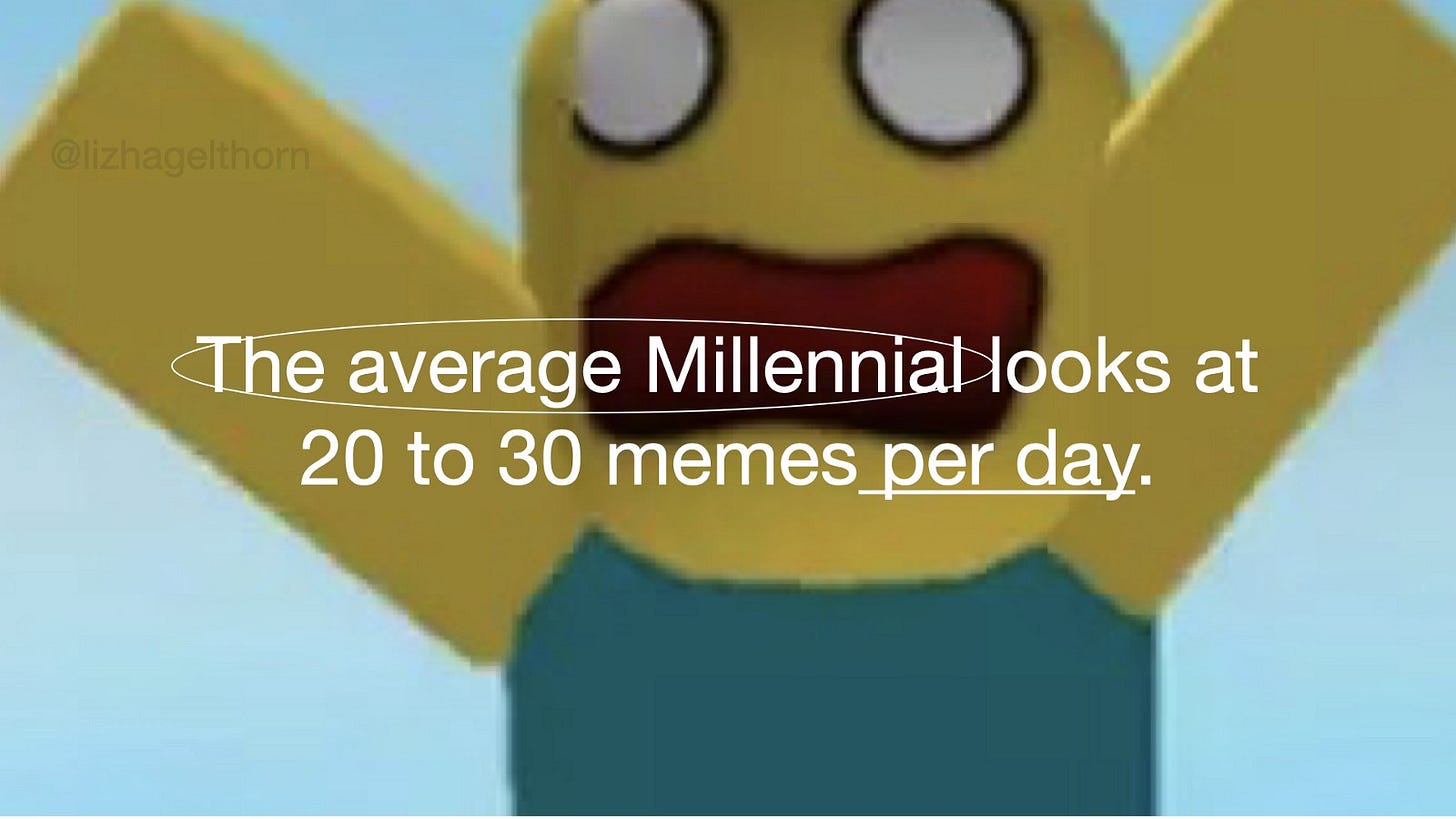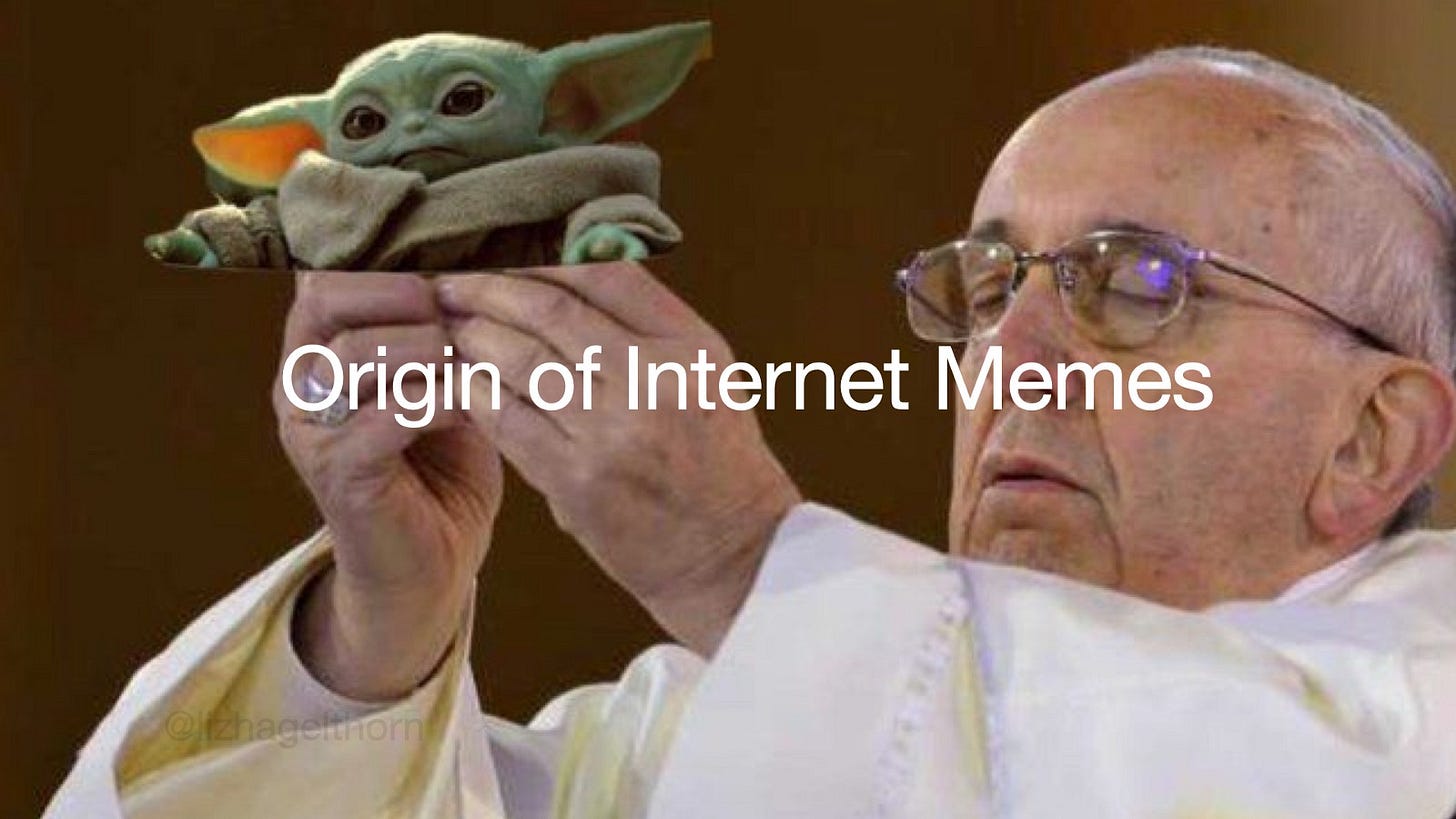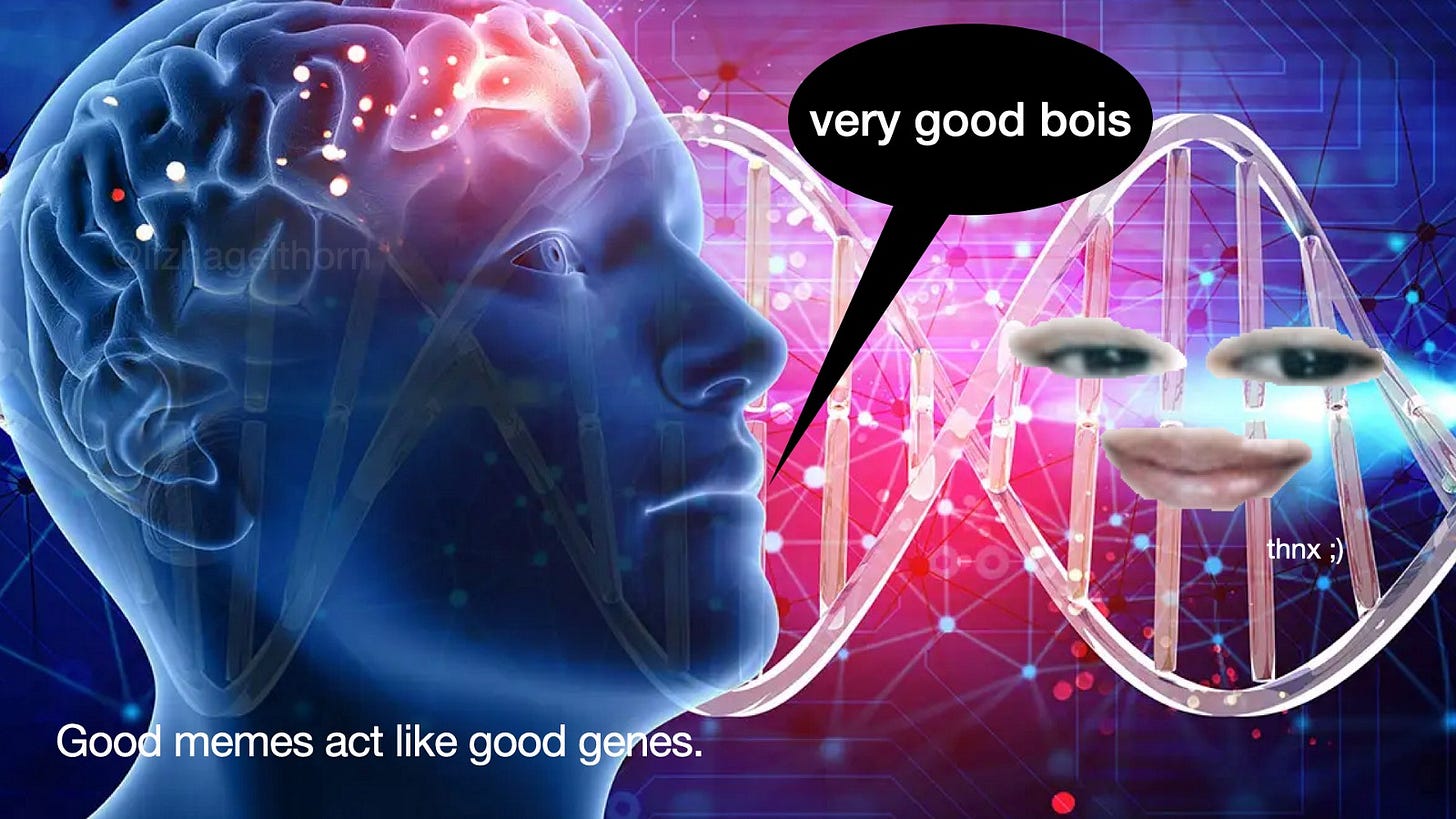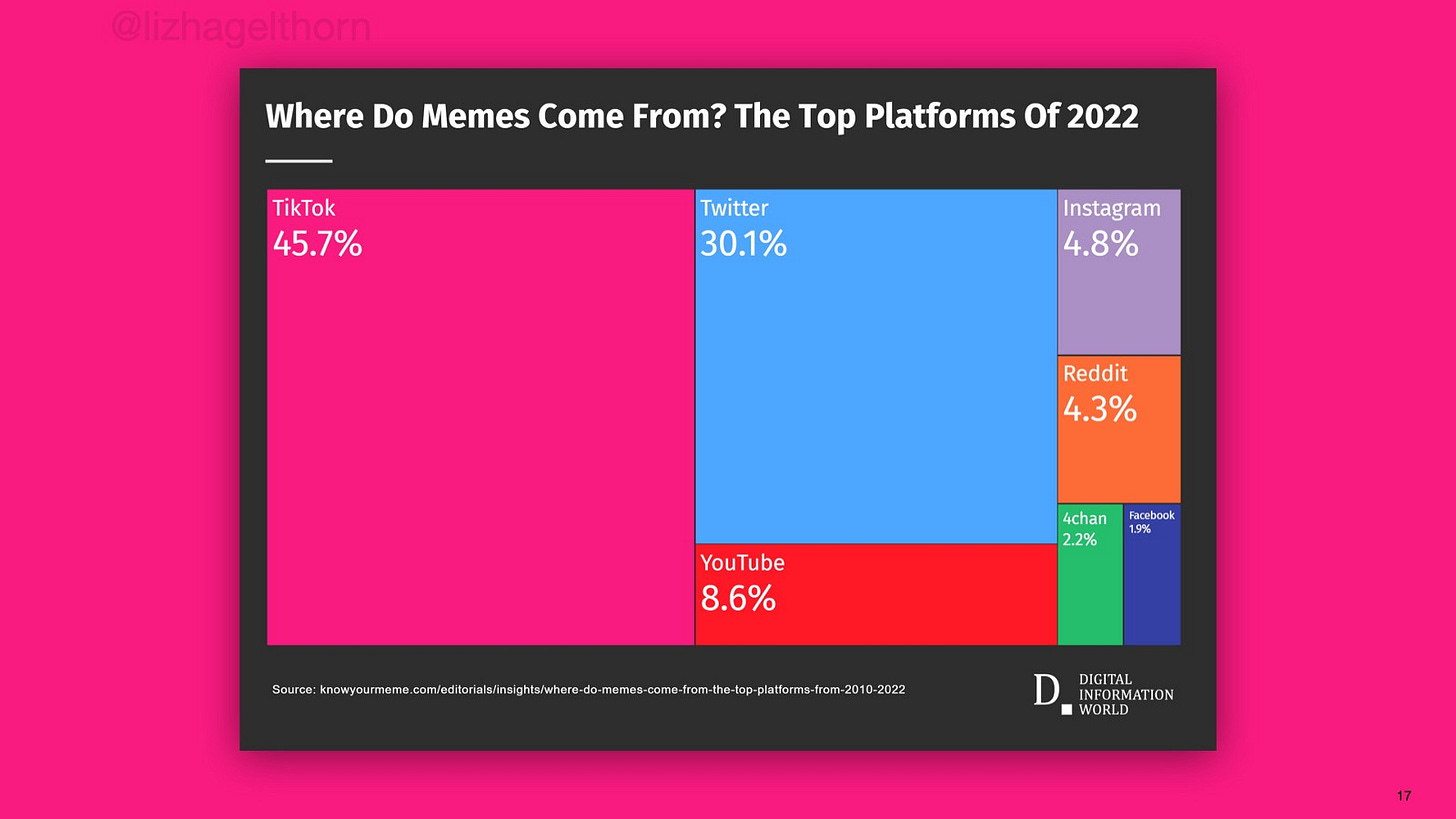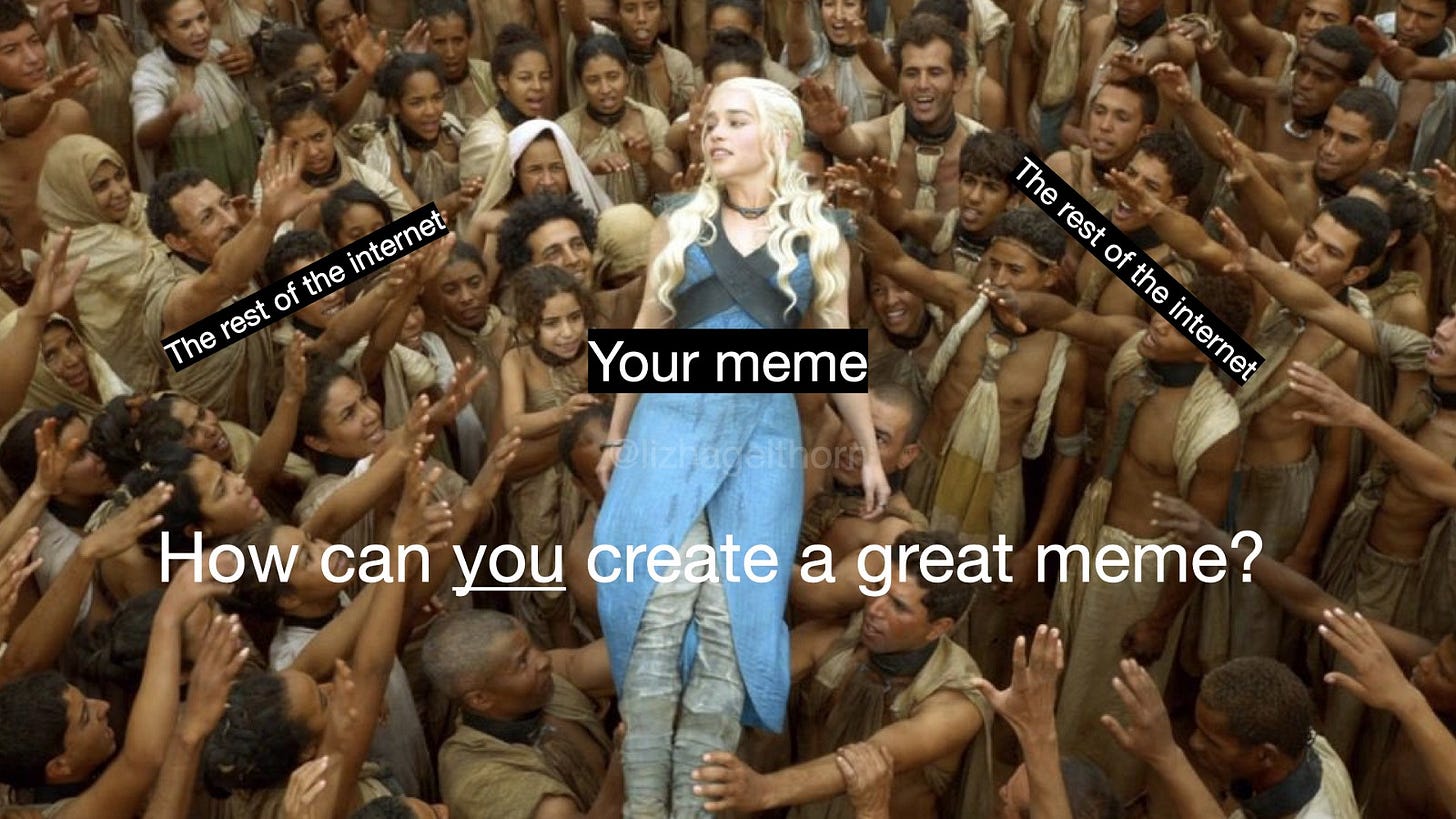Memes & Monetization: Can You Make Money from Memes?
The Meme industry is just getting started.
In this piece, I will highlight the current landscape for viral organic content, map the key players and describes the financial side of meme creation. The slides pose a series of questions around the future of monetization on the Internet. These issues lead to a description of the dark reality for creators, meme maker success strategies based on building network effects, and ways to protect creatives who are under pressure from the content churn required by big social media platforms. These slides are for anyone with a social media account who enjoys sending memes to their friends.
The below materials are meant to be presented with voiceover and are from my keynote at Gather - Stockholm 2022. The slides have been reformatted with my notes. If you enjoy this piece, subscribe to my Substack or share and tag me @lizhagelthorn across social media.
Table of Contents
What are Memes?
Why are Memes Important?
Meme Industry & Market Size
Origin of Internet Memes
What Platforms Do Memes Come From?
How To Create a Great Meme
How Memes Make Money
The Current State of Monetization for Memes
What Happens Next…
Making and sharing memes is one of the most popular activities on social media.
But what is a meme?
In greek, meme translates to “to imitate” , in french the translation is “same”
If you can understand the science of memes, you can understand the larger cultural phenomena, communities and issues for our world.
Memes come in many different shapes and sizes but ultimately memes are reflections of cultural artifacts, stories, emotions and communities found across the internet.
The official definition of a meme points to memes as central to communication across the internet. To make a meme means to transform and remix units of culture.
Memes are the paradigm of a new, flourishing creativity. Not only are these captioned images one of the most pervasive and important forms of online creativity, but they also upend many of copyright law’s fundamental assumptions about creativity, commercialization, and distribution.
There are two central attributes of Internet memes: creative reproduction of materials and intertextuality.
If you can understand the science of memes, you can understand the larger cultural phenomena, communities and issues for our world.
In the same way emojis can easily and quickly communicate our emotions in a way that words can’t, memes do the same for messages, ideas and allow us to provide subtext for the world around us in a way that regular speech cannot.
The digital age (2000s+) has ushered in a new “attention economy” in which it is no longer speech that is scarce, but rather listeners’ attention. Communicating by meme is a hack that gives individual speakers a fighting chance to be heard in our attention-scarce world.
Just like a song, memes provide the format for others to put their stories and messages within. How a songwriter writes a melody or a rapper writes a bar, people fit their stories in the format of trending internet memes.
When we look at a meme on the internet, we resonate with different jokes, images or “in-groups” pictured in the memes, because we see those parts within ourselves.
Representing a growth rate of 21.6% compared to a 13% growth rate across global digital content
According to Instagram, this figure is up from 500k in 2018.
With the global pandemic, people were experiencing the effects of a cultural phenomenon at a scale like never before.
The American Psychological Association did a study and found funny memes helped people cope with the stress of the COVID-19 pandemic, making viewers feel calmer and more content just by looking at 3 memes.
The researchers found that people who viewed memes compared with other types of media reported higher levels of humor and more positive emotions, which was indirectly related to a decrease in stress about the COVID-19 pandemic.
When it comes to the average type of marketing assets across the internet (branded content, promotions, etc.), memes outperforms them all with 60% of consumers saying they are more likely to buy something from a brand that uses memes.
The term “meme” first appeared in the 1976 book by evolutionary biologist Richard Dawkins.
Dawkins defined “memes” as a unit of cultural transmission such as slang, fashion trends, behaviors, religion.
The popularity of a meme is what ensured its survival.
Memes battle for survival with attention, with the best memes suiting different contexts or becoming timeless.
The more popular memes survive..Analogues to natural selection.
Later in life, Dawkins clarified that instead of mutating by random change like a gene, internet memes mutate based on human creativity.
The modern study of Memetics gained traction in the 90s but ultimately failed as most scientists saw it more as an obscure philosophy and not a renewed science.
As the internet evolved, so did memes. One thing that remained the same from 2005–present day: all memes originate from two types of online platforms (one video and one text or forum-based with the ability to share photos).
When YouTube was released in 2005, video memes became popular with “Rick Rolling” or the Harlem Shake.
By 2010, almost 35% of memes came from YouTube and 30% came from 4chan.
By, 2011 Reddit and Tumblr held 12–14% of memes respectively.
2010, Instagram was founded.
In 2012, Vine was founded and generated about 7% of all internet memes.
By 2014+, 25–50% of memes came from Twitter.
By 2020, TikTok started gaining 30%+ of all meme content on the internet.
In 2022, TikTok owns 45% of the meme conversation on the internet.
In 2022, Twitter owns 30% of the meme conversation.
There are 3 things that make a meme:

